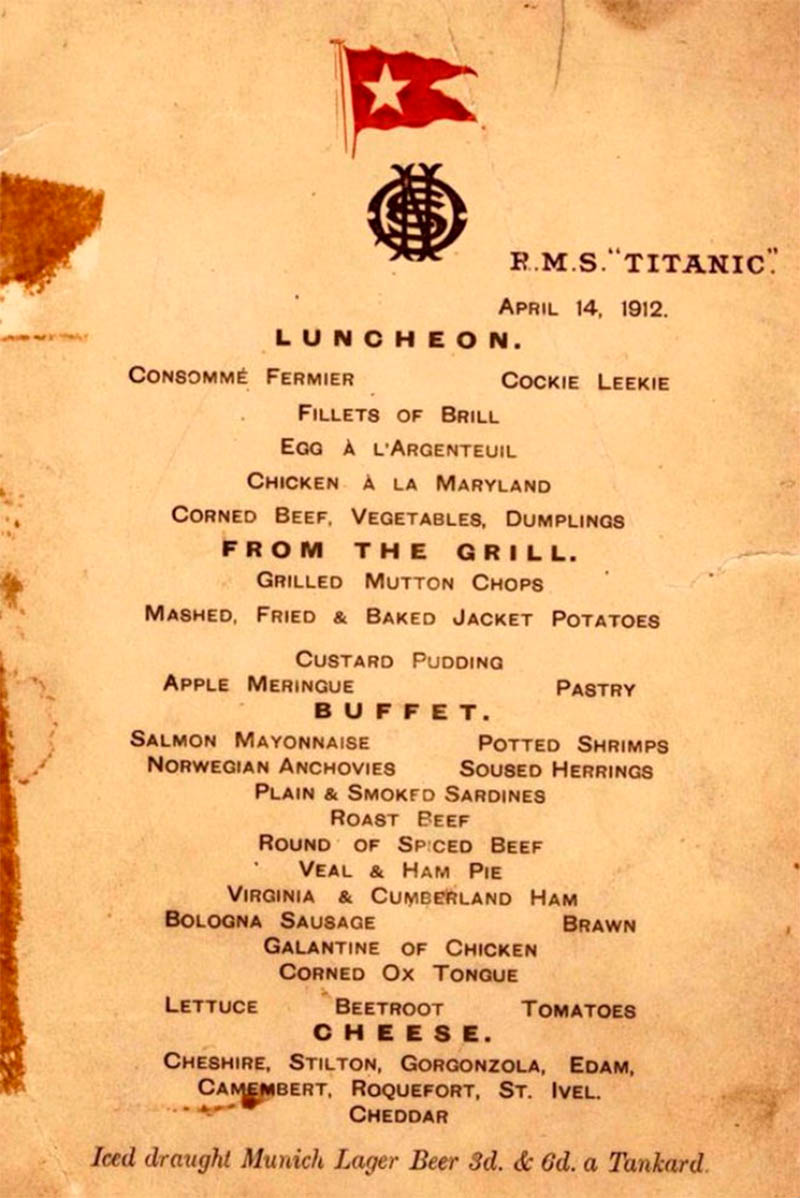The Titanic, a ship of dreams, not only carried passengers but also exquisite culinary experiences. In April 2024, a viral post on X showcased what was claimed to be the first- and third-class menus from the Titanic's fateful last day. These menus sparked curiosity and nostalgia, drawing attention to the lavish dining options available to the ship's guests. The contrast between the first-class luxury and the third-class simplicity reflects the social hierarchy of the time and the tragic events that unfolded on April 14, 1912.
The images revealed a selection of gourmet dishes for first-class passengers, including fillets of brill and salmon mayonnaise, while the third-class menu featured more humble options like oatmeal porridge and roast beef with brown gravy. Over 1.2 million views later, the post has reignited interest in the Titanic's legacy, particularly its culinary offerings.
As we delve deeper into the history of these menus, we uncover the fascinating stories and expert insights surrounding them. This exploration not only highlights the Titanic's opulent lifestyle but also the enduring intrigue of its artifacts, which continue to captivate enthusiasts and historians alike.
Understanding the First-Class Menu
According to experts, the first-class menu that surfaced is believed to be a replica known as the Rosemead menu. This replica originated from a commemorative event held in 1962, marking the 50th anniversary of the Titanic's sinking. The menus distributed at this event have often been mistaken for authentic artifacts over the decades. As noted by Karen Kamuda, president of the Titanic Historical Society, this confusion underscores the challenges in authenticating memorabilia from the Titanic.
The original first-class menus were distinguished by their craftsmanship, featuring edges of 22-karat gold and unique printing techniques. They were printed on postcard-sized paper, which made them a cherished keepsake for passengers. The tactile differences in the printing process, such as raised impressions versus smooth surfaces, are key indicators of authenticity that experts look for today.
Challenges in Authenticating Titanic Menus
Authenticating Titanic menus poses significant challenges due to the prevalence of reproductions. Many items claimed to be authentic have emerged over the years, complicating the historical narrative. Experts like Craig Sopin from the Titanic International Society emphasize the need for physical inspection to validate claims. Digital images alone cannot provide the necessary details to determine authenticity.
In the case of the Rosemead menu, its lack of distinctive features compared to an authentic menu raises further questions. The absence of certain printing marks and the presence of an advertisement for the event sponsor are crucial details that help differentiate replicas from original artifacts.
The Third-Class Menu: A Reflection of Social Class
The third-class menu, while simpler, is equally significant in understanding the Titanic's story. It reflects the realities of life for many passengers who traveled in lower classes. The Titanic Historical Society hosted an authentic third-class menu that belonged to Thomas Theobald, a passenger who tragically lost his life during the disaster.
This menu tells a poignant story, highlighting the human experiences intertwined with the Titanic's legacy. As noted on the society's website, Theobald's narrative is a reminder of the personal stories behind the tragedy. His menu, along with others, provides a tangible connection to the past, allowing us to glimpse into the lives of those who journeyed aboard the ship.
Preserving Titanic's Culinary Heritage
Efforts to preserve and authenticate Titanic artifacts continue, with organizations dedicated to maintaining the ship's historical integrity. This includes not only menus but also various artifacts that have surfaced since the ship sank. The Titanic Historical Society and Titanic International Society play pivotal roles in research and education, helping to keep the ship's memory alive.
Through exhibitions, publications, and educational programs, these organizations aim to share the Titanic's rich history with future generations. The ongoing fascination with the Titanic serves as a testament to its cultural significance and the enduring curiosity surrounding its tragic story.
As we reflect on the culinary offerings aboard the Titanic, we are reminded of the complexities of class, memory, and history. The menus, both authentic and replicated, serve as important artifacts that allow us to connect with the past in a meaningful way.
Exploring The Truth Behind The Viral 1977 Photograph Near The Twin Towers
The Controversial Case Of Tulsi Gabbard: Secret Watchlist Allegations
Understanding Tim Walz's Military Service: Facts And Misconceptions


